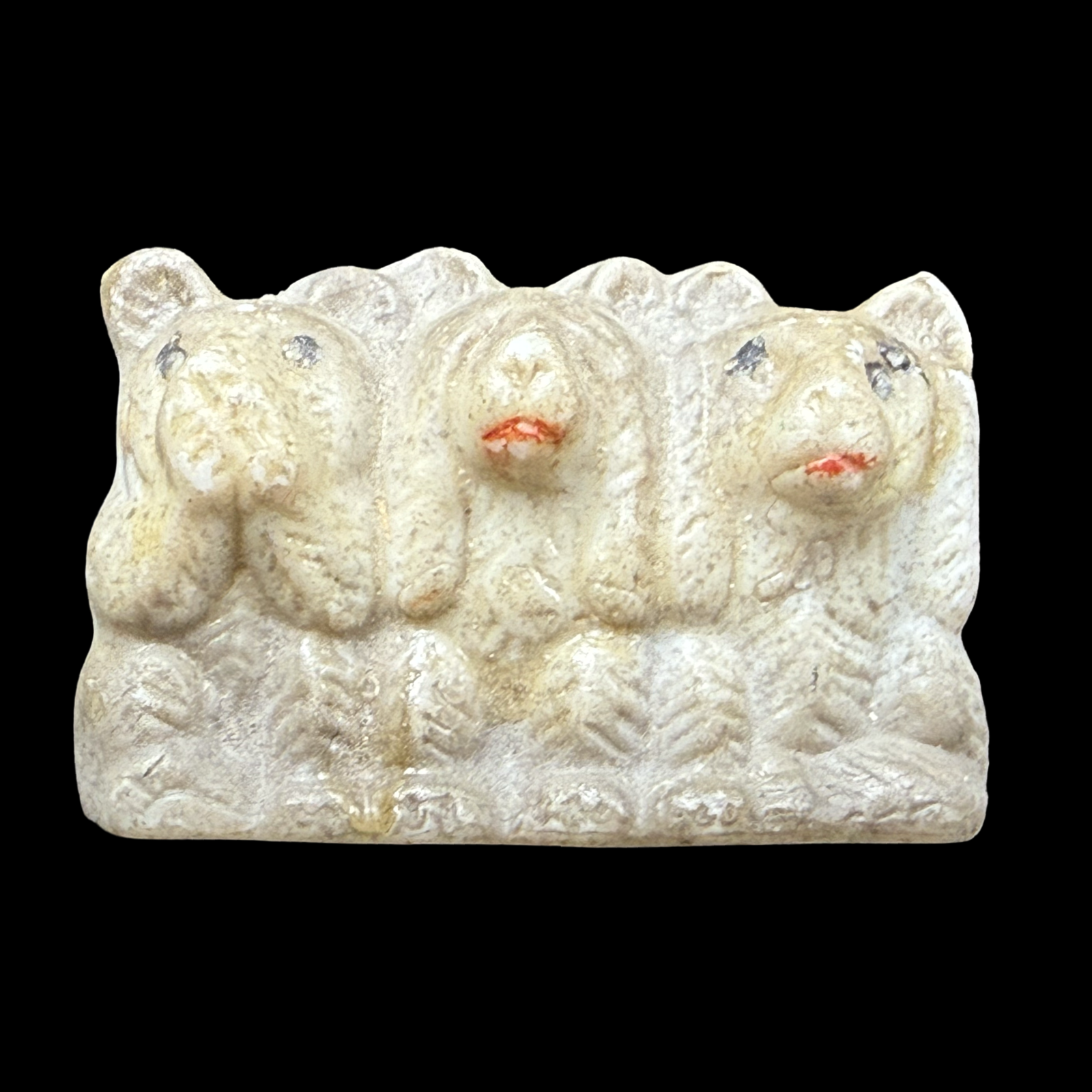Three Wise Monkeys
A Trio of Enigmatic Monkeys
“See no evil, hear no evil, speak no evil.” These words resonate across cultures, but their visual embodiment lies in the enigmatic Three Wise Monkeys. Together, they symbolize a powerful moral imperative: avoid evil thoughts, actions, and words. Let us explore their origins, symbolism, and the wisdom they impart.
Historical Roots and Symbolism
The trio’s origins can be traced back to ancient Japan. Specifically, the Tōshō-gū shrine in Nikkō is the source of the famous 17th Century carving of the Three Wise Monkeys. Crafted by the skilled hands of Hidari Jingoro, these carvings likely drew inspiration from Confucius’s Code of Conduct.
In ancient China, similar phrases emphasized propriety: “Look not at what is contrary to propriety; listen not to what is contrary to propriety; speak not what is contrary to propriety.”
These teachings likely crossed the sea to Japan during the Nara Period (8th century), intertwining with native beliefs and urging individuals to lead a life of virtue and integrity.
Mizaru (See No Evil): With hands firmly covering his eyes, Mizaru embodies prudence. His gaze is unyielding, refusing to witness malevolence. His message echoes through the ages: sometimes, ignorance shields us from darkness.
Kikazaru (Hear No Evil): Kikazaru clasps his ears, shutting out the cacophony of wickedness. His stance reminds us that selective hearing can be a virtue. By shutting out the noise, discernment prevails.
Iwazaru (Speak No Evil): Iwazaru’s lips are sealed, a vow of silence against harmful words. His tongue, like a coiled serpent, remains dormant. In a world where words wound, his restraint is a beacon.
In Japanese culture, the monkeys are often associated with the Tendai sect of Buddhism, which advocates for purity of mind, speech, and action. But there’s more to their tale…
Photo: Tourist Japan, The Guide. As you can see, the correct order is Kikazaru, Iwazaru, Mizaru.
Cultural Significance
Beyond their religious connotations, the Three Wise Monkeys have found a place in popular culture and everyday life. They are frequently used as a metaphor for the importance of maintaining moral integrity and avoiding negative influences. The phrase “See No Evil, Hear No Evil, Speak No Evil” has become a universal adage, encouraging people to focus on positive thoughts and actions.
In the West, the Three Wise Monkeys have been embraced as symbols of discretion, moral integrity self-restraint. They are often depicted in art, literature, and even as decorative items, serving as a reminder to uphold ethical standards in our daily lives.
Occasionally, a fourth and fifth monkey join the group. The fourth monkey is usually depicted with his hands over his genitals, admonishing us either to “do” no evil or refrain from sexual activity, depending on your interpretation. And the fifth monkey holds an empty bowl, reminding us not to overeat or engage in gluttony, one of the seven deadly sins.
Beyond Japan’s Shores
Beyond Japan, these monkeys found their way to Britain in the 1900s. Soldiers carried them as lucky charms during the First World War. But over time, the proverbial saying, “See no evil, hear no evil, speak no evil,” evolved from its original meaning and now serves as a gentle rebuke to those who ignore wrongdoing. In either case, The House can’t help but think that Robert DeNiro’s character may be channeling Iwazaru when he advises a young Henry Hill in the film Goodfellas: “Never rat on your friends; and always keep your mouth shut.”
Lessons from the Simian Trio
In a world clamoring for attention, The Three Wise Monkeys remind us to guard our senses against malevolence and teach us that silence can be a powerful response. So, next time you encounter these mystical monkeys, pause and reflect on their timeless wisdom. What evils do you shield your eyes from? What distractions do you choose to ignore? And when words beckon, will you heed Iwazaru’s silent counsel?
Three Wise Monkeys Statue; House of Good Fortune Collection
Three Wise Monkeys Cast Iron Bank; House of Good Fortune Collection
Three Wise Pigs Bique “Penny Dolls”; House of Good Fortune Collection
Three Wise Bears; House of Good Fortune Collection






